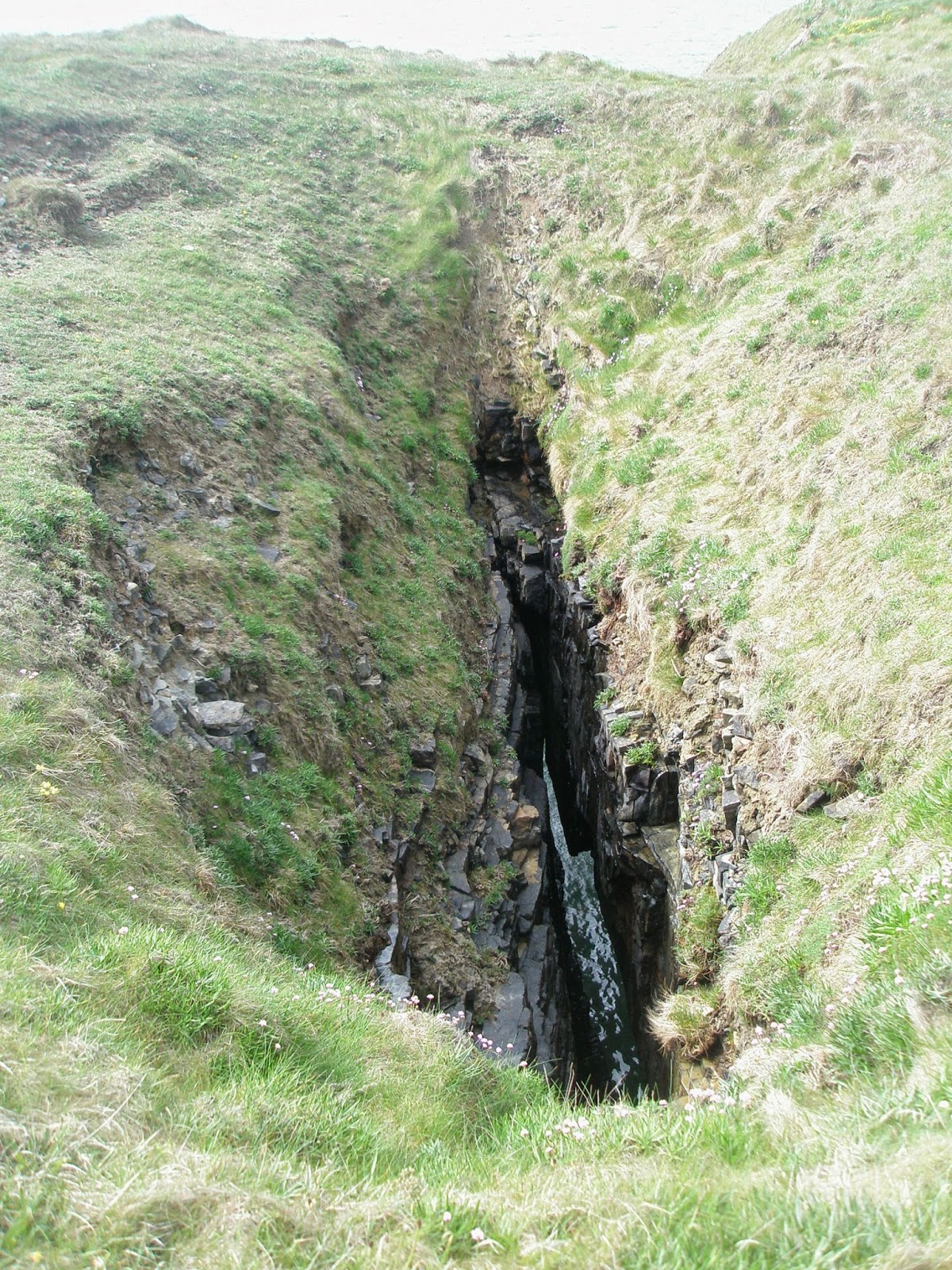Up early today, and off to Loop Head to meet up with Laura Foley of The Long Way Round Walking Company. I had been in contact with Laura a couple of weeks previously regarding a guided walk to see some of the places mentioned in our family diaries and letters. So today was the day, and it dawned fine and sunny.
As I had arrived back in Kilrush quite late the previous evening, I had decided to call at the supermarket first thing today to pick up some lunch supplies. Hadn't factored in the Irish "nothing open before 0930" though! I did have some dry crackers and fruit left, so wasn't going to starve even if it was uninteresting!
I met Laura and her sister at the Loop Head carpark. After changing into hiking boots, we set off for a 15km Loop Head hike.
Our way took us along the Shannon coast of the Loop Head Peninsula, and thanks to the weather there were clear views across the Shannon estuary to the Kerry mountains. The similarities with the view across Waratah Bay to Wilsons Promontory at home were obvious, and I'm sure that it would have been a constant reminder of their Irish homeland for my grandfather, his brothers and cousin.
 |
| Across the Shannon to Kerry |
The first point of interest was the Hanging Gardens. In the 19th century, Henry Keane, brother of the both the infamous Marcus and my 2x great grandmother Anne, had a summer residence known as The Cabin along the Loop Head Peninsula. On the cliff face below his home, there is a wide ledge, its location providing shelter from the Atlantic weather. Henry Keane widened an existing crevasse in the rocks to provide access to the ledge, and created a garden here. Nothing remains of Henry's home or garden today, but the ledge is a picture of sea-pinks and provided us a sheltered grassy spot to admire the view and enjoy the scones provided by Laura.
 |
| Entrance to Hanging Gardens |
 |
| The rock wall of the Hanging Gardens |
We continued our walk along the Shannon coast, visiting places with names familiar to me from my great-uncle Fred's diaries in 1904-05, and earlier from his cousin Amy Griffin's diary of the 1870's.
Poulnapeasta - the water dragon's lair, Moab's Washpot, Aillnagroagh and Horse Island. Laura was a wealth of information on the area, including the botany, pointing out various plants which were edible, and identifying the wildflowers.
 |
| Moab's Washpot |
 |
| Horse Island |
Horse Island is not actually an island at all. Unfortunately, it has been fenced by the current owner, so it wasn't possible to go onto it.
 |
| Aillnagroagh as sketched by Sarah Haughton in about 1859 |
 |
| Aillnagroagh as photographed by me in May 2014 |
Not a lot has changed in the past 150 years! Minus one stack, but otherwise pretty much as it was.
From Horse Island, we left the coast and cut across farmland to the Atlantic side of the peninsula, coming out near Fodry, and following the cliffs back to the lighthouse. The scenery on this side was every bit as spectacular as along the Shannon.
 |
| The beautiful sea-pinks |
The Chimney is a rock formation mentioned in Amy's diary. Passing through the Chimney seems to have been a challenge to be passed by all family and visitors to the Kilbaha cottage. I was keen to see this formation, and Laura pointed it out with the advice that it wasn't something she would recommend doing. It was quite a deep hole in the rocks leading down to the shingles below, and the potential for accidents would be significant. I don't know how much it may have changed since Amy's days, but my impression from her writings is that it was quite a narrow opening.
 |
| The Chimney |
Further round we came to Gull Island, so named for the masses of gulls nesting on the rock ledges along the sides. With this came spectacular views back to the lighthouse and Lovers Leap - the gap between the mainland and Diarmuid & Grainne's Rock, also known as Cuchullins Leap. This was the location of Amy Griffin's daring crossing in a makeshift crane which hoisted her across.
 |
| Gull Island |
 |
| Lighthouse & Lovers Leap |
The birdlife along the cliffs on the way back was amazing. Apart from the gulls, there was a large colony of Guillemots nesting. These birds only spend time on land while nesting, coming ashore in May and leaving their nests again in August.
It was a great walk on a beautiful spring day, tracing the footsteps of my forebears, in the places they loved and wrote about. Thanks to Laura for helping me to add another layer of memories to those passed down the generations.
 |
| Guillemot egg |
 |
| unknown wildflower |
No comments:
Post a Comment